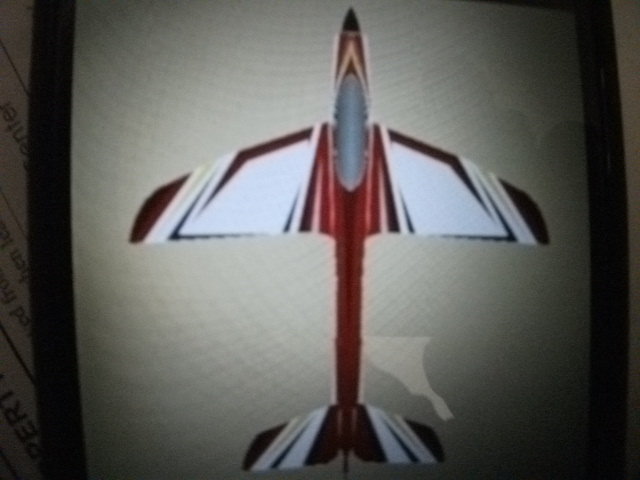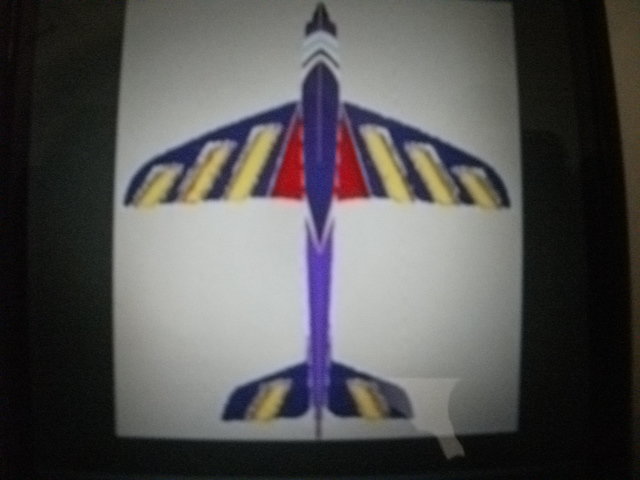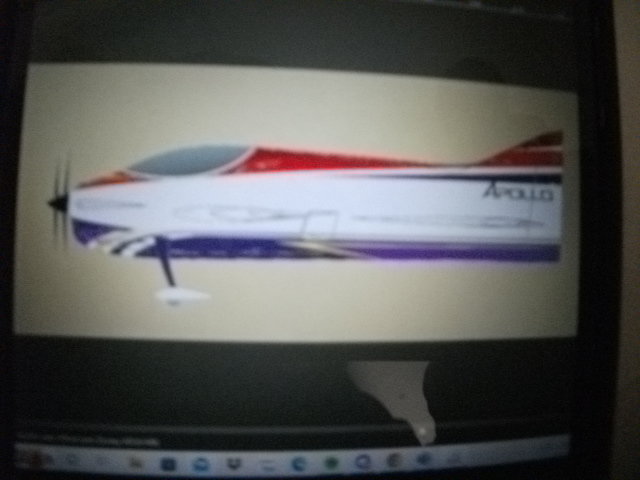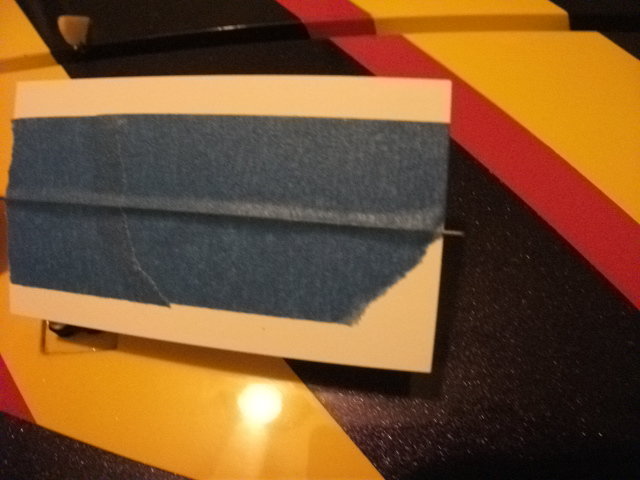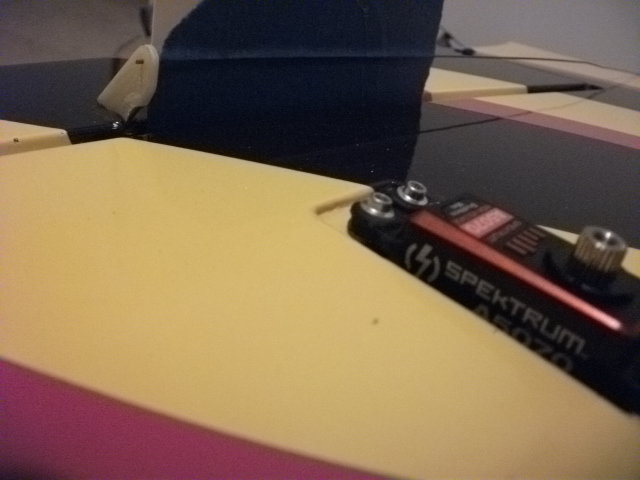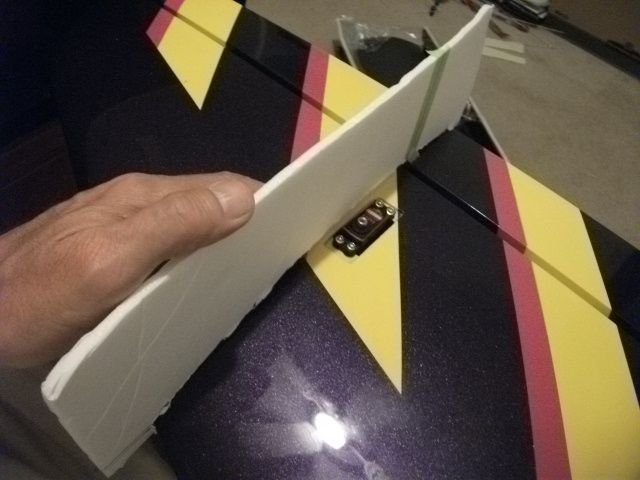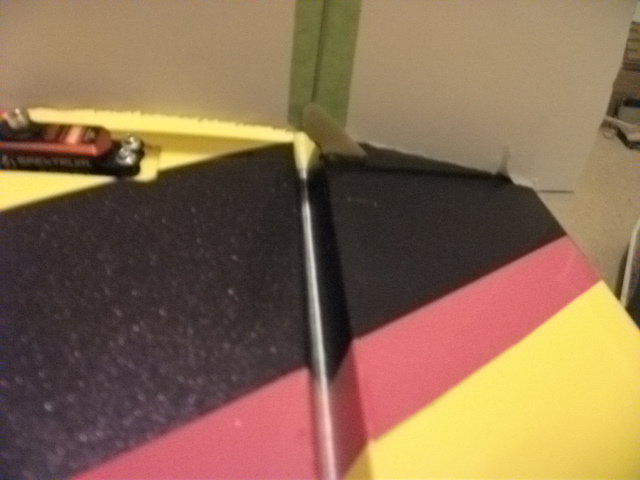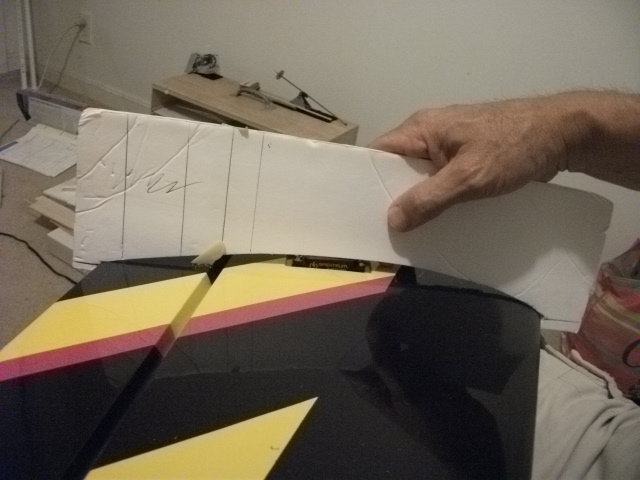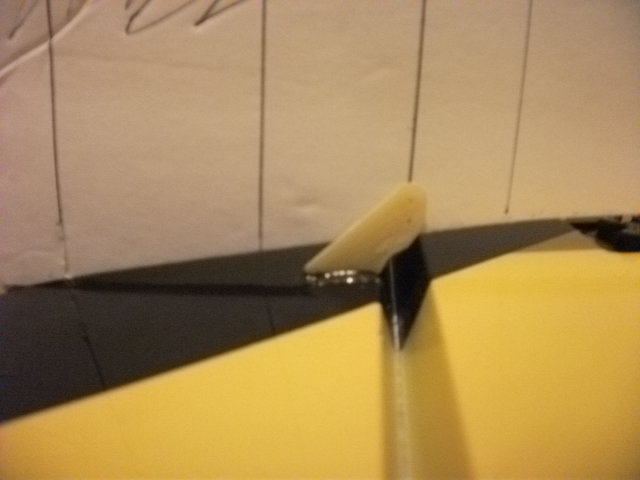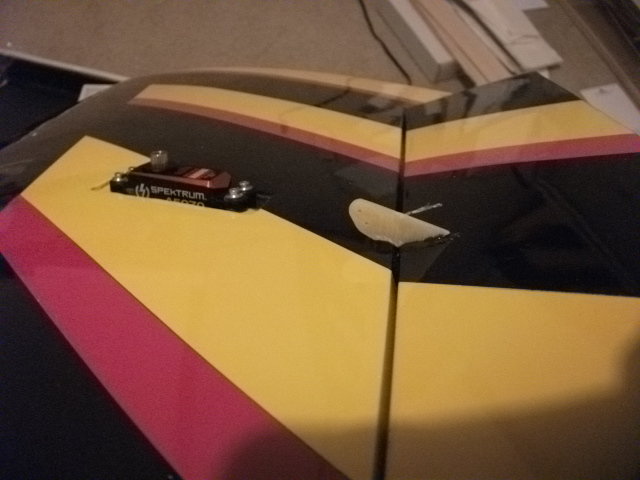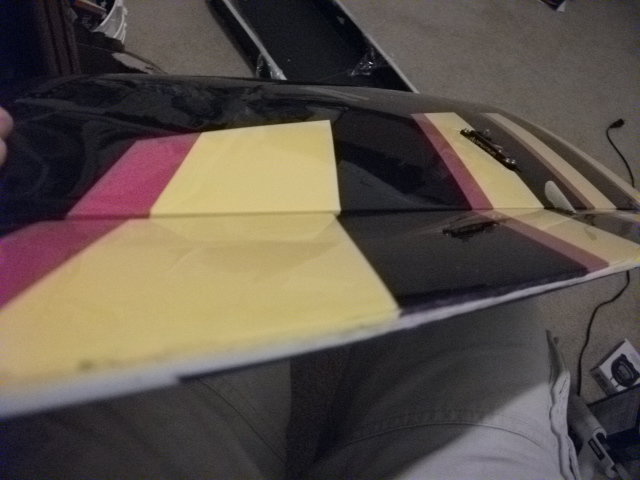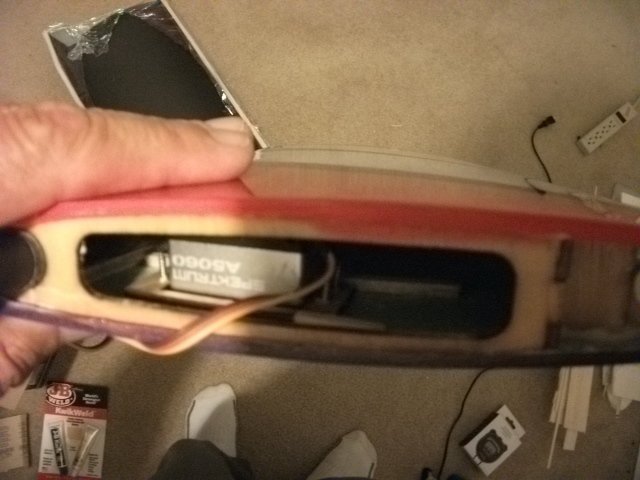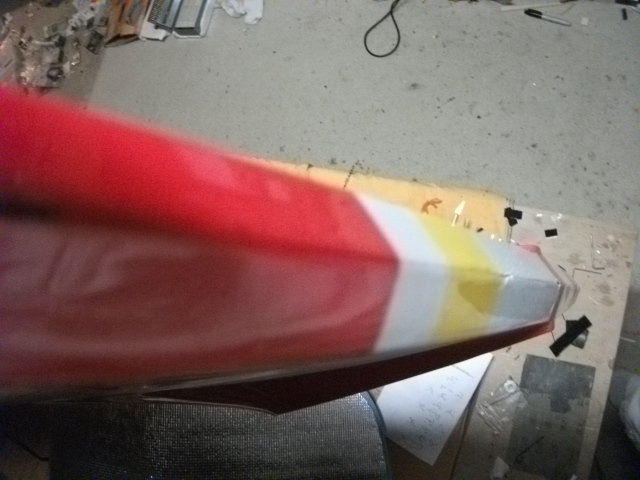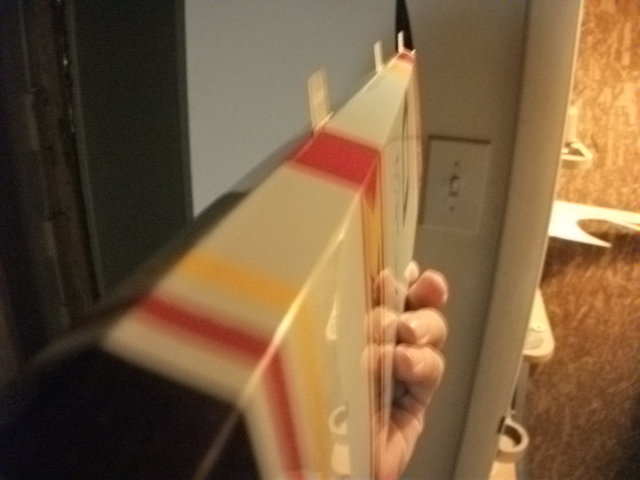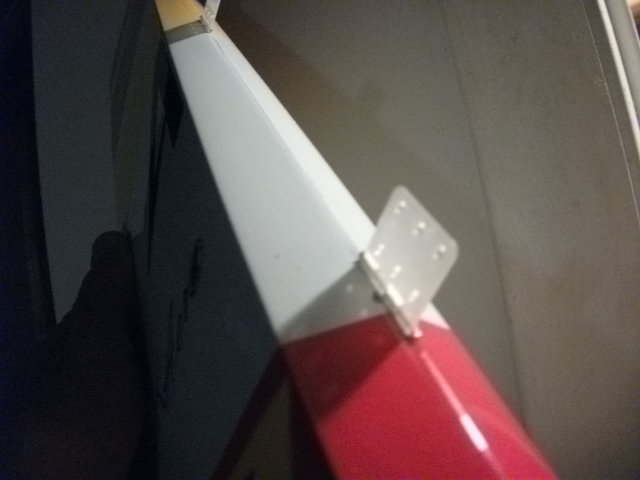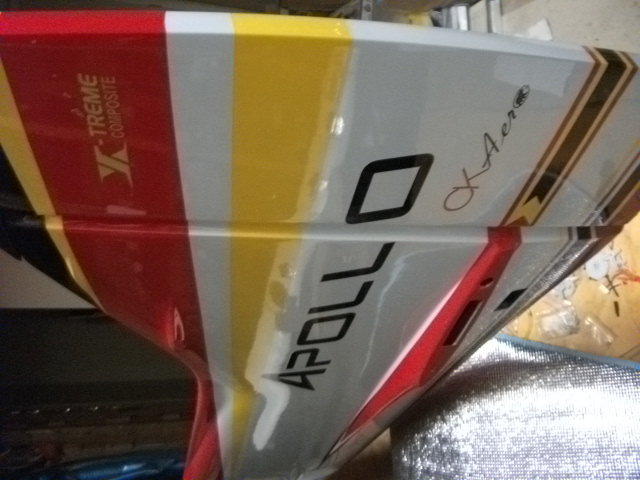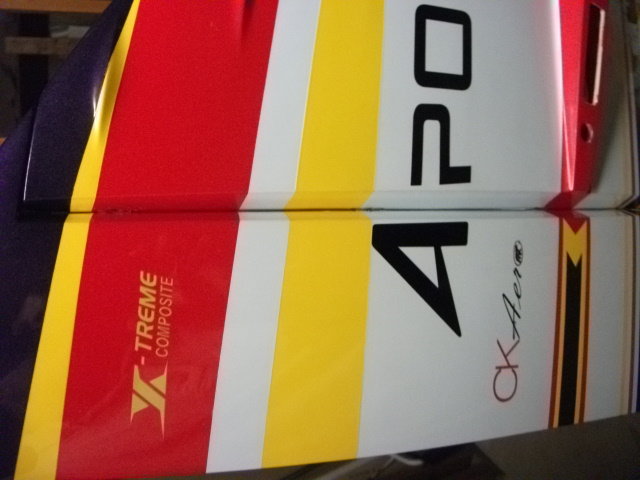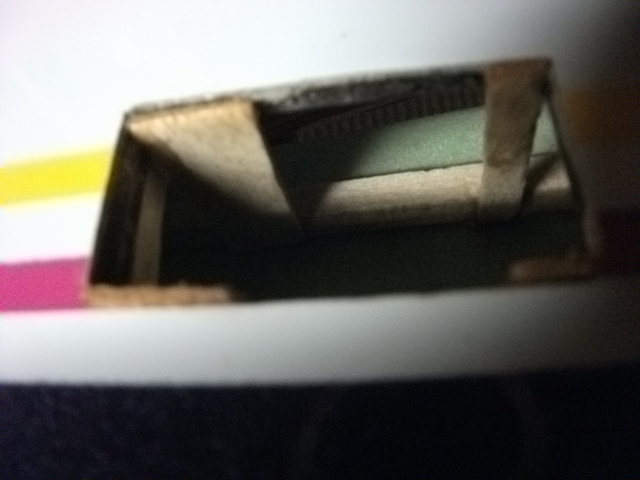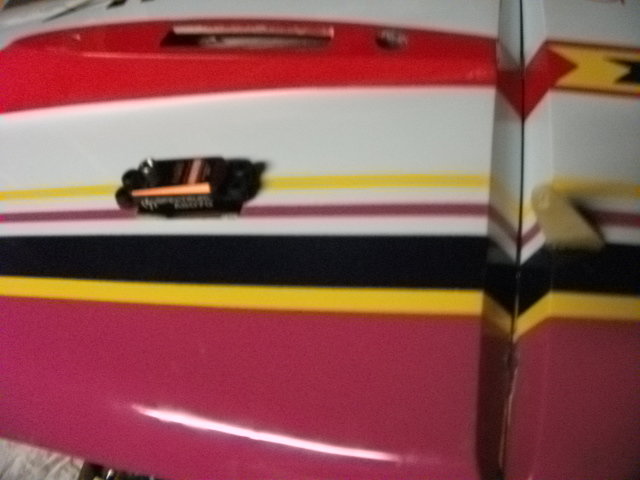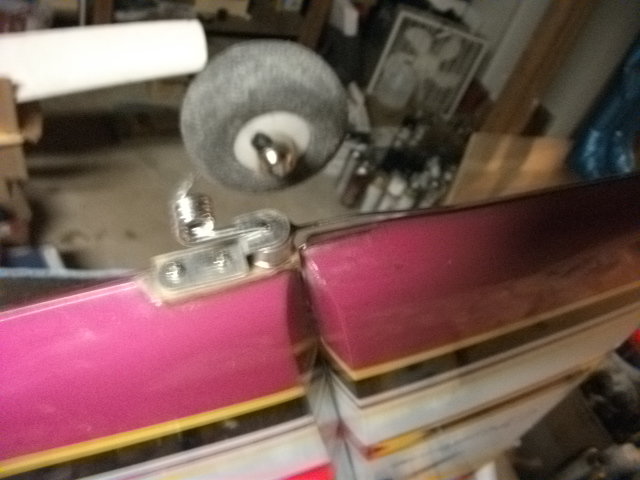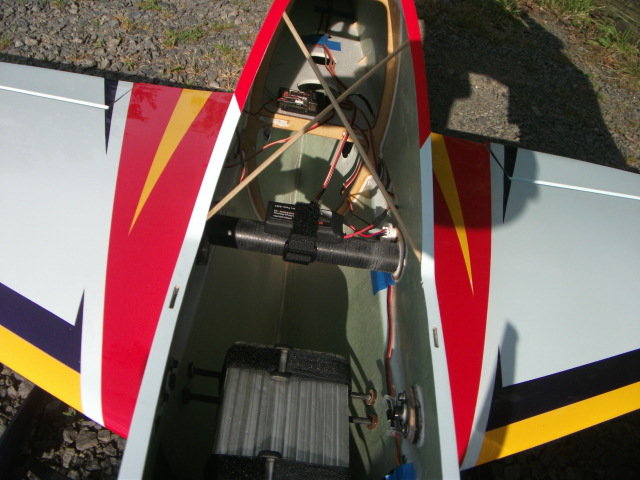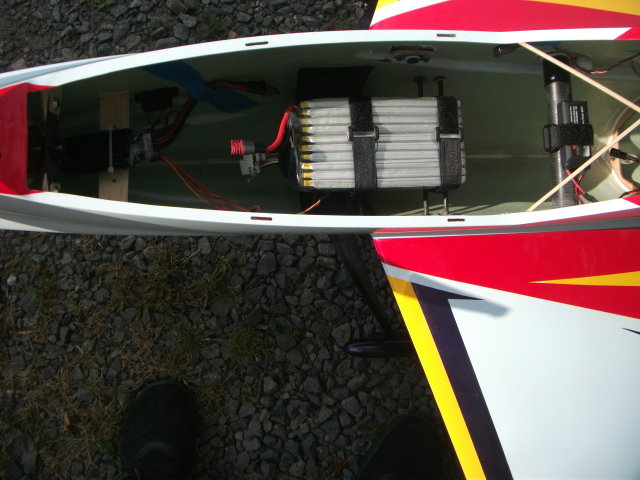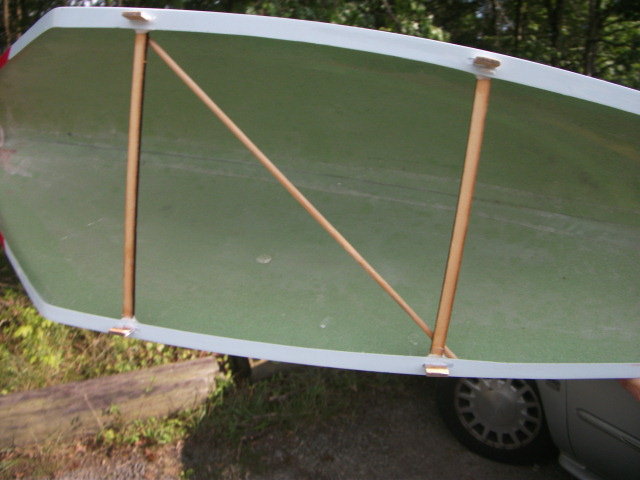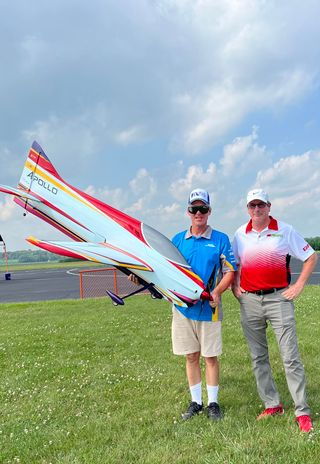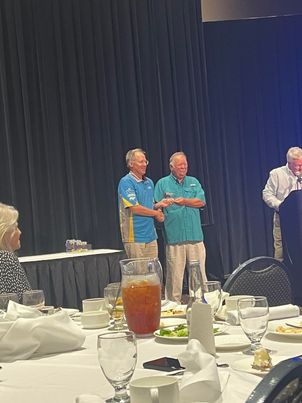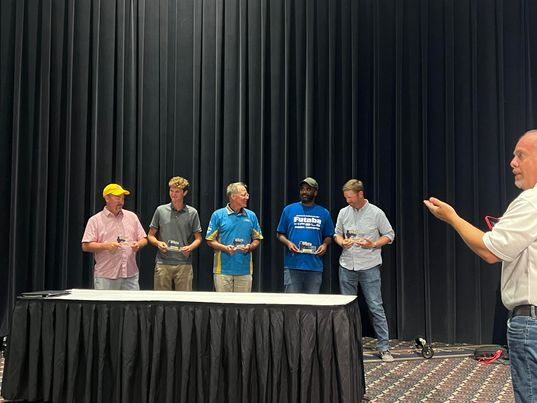F3A Model Apollo
#8
I did shift the battery back about 3 inches and the plane is very happy with the CG per recommendation by CK Aero: Just at or slightly behind the wing screw attachment. To check the CG, I slide out the wings about a half inch on each side to see the balance point then use fingers to verify the CG from underneath.
Radio transmitter is the new Spektrum NX-20. Batteries are Thunder Power 6000 10S. Rx battery 1300 Spektrum.
After just a few test flights, I can say the plane is the best rolling plane I have ever flown. I did some knife edge loops and vertical 8's and its very consistent at high-speed high throttle and low speed knife edge. Very good aerodynamics which are obviously optimized for these complicated unknown maneuvers. Well thought out design.
Radio transmitter is the new Spektrum NX-20. Batteries are Thunder Power 6000 10S. Rx battery 1300 Spektrum.
After just a few test flights, I can say the plane is the best rolling plane I have ever flown. I did some knife edge loops and vertical 8's and its very consistent at high-speed high throttle and low speed knife edge. Very good aerodynamics which are obviously optimized for these complicated unknown maneuvers. Well thought out design.
#9
Great flying airplane. The three things that stand out include: (1) Locked in lines and radius segments, resulting in reduced pilot workload, (2) Excellent and predictable snaps- places like the 45 degree knife edge up line with snap, opposite snap and the reverse ave
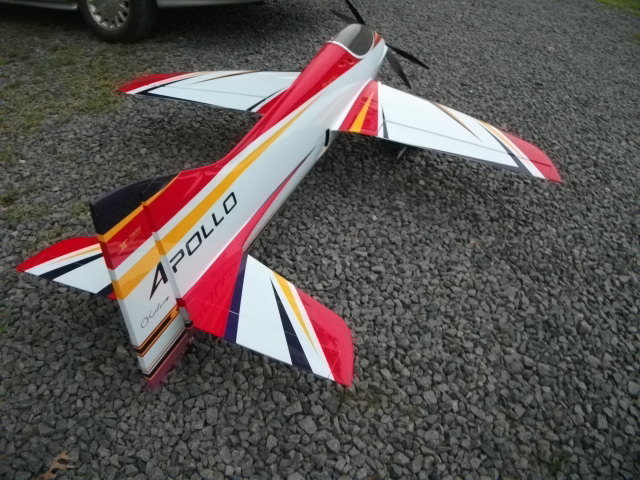
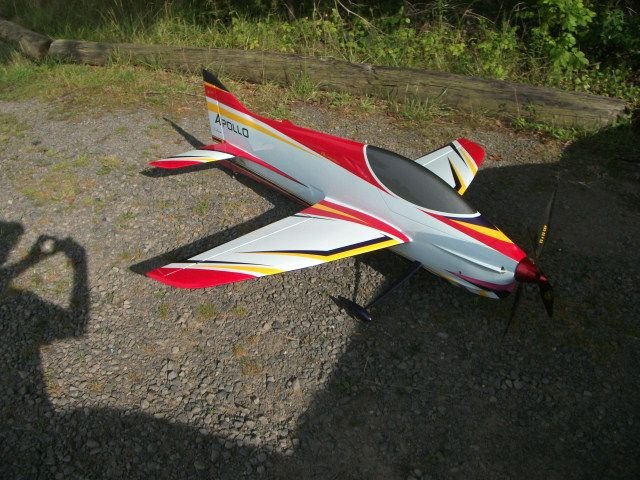
lance with the snap at the bottom of the outside loop. (3) Excellent balance in the yaw (no weather vane effect) which is part of why it has such a locked in feel. There are some very subtle design features that also really became apparent the more I flew the plane. My finish at the NATS is a direct result of the excellent flight characteristics of this Apollo aircraft.


lance with the snap at the bottom of the outside loop. (3) Excellent balance in the yaw (no weather vane effect) which is part of why it has such a locked in feel. There are some very subtle design features that also really became apparent the more I flew the plane. My finish at the NATS is a direct result of the excellent flight characteristics of this Apollo aircraft.
#11
Some motor and speed control settings c.o. Brenner's Contra thread. I flew the Mezon 85 Evo at the NATS with Contra V4
Poles = 14 for Pyro 600-09, 10 for Pyro 650-83
Timing = 24 degrees
PWM frequency = 16khz
Acceleration = Normal, 1 second
Low Throttle Pulse Width = Auto
High Throttle Pulse Width = 2.05ms
Brake = 30% with 1 second on time
Henning,
I have completed some flights with the V4 and the D3 ESC and the 18SZ transmitter. Falcon 23x20F and 23x22R, Pyro 600-970, Allure @ 4550g with TP5000s.
The endpoints for the throttle are set at 120% on the low (1193us) and 109% on the high (1980us). 114% on the high will show 2000us, but I am using 109% to allow some overhead for the governor to keep the maximum power the same at the end of the flight when the battery voltage has dropped. I tried to make all curves close to the same power with the throttle stick in the middle position, so it is easier to change between curves without causing a sudden change to the motor power.
Takeoff Landing throttle curve
I use a 3 position switch to makes small changes to idle speed on the throttle AFR curve.
990us (zero RPM).
1193us (slow idle). Futaba “rate” on the mixing curve is -65, and this is for sitting on ground with props spinning.
1243us (fast idle). For landing pattern – sometimes I change to slow idle (1193us) just before landing.
1980us (full power). Futaba rate is +100.
Advancing throttle curve has delay of 24 (about 4 seconds).
Reducing throttle curve has delay of 21 (about 3.5 seconds).
Normal throttle curve.
1652us (low power), rate is +29.
1980us (full power), rate is +100.
Advancing throttle curve has delay of 22.
Reducing throttle curve has delay of 20.
Because the throttle is moving over a much smaller range, the time it is taking to go from lowest to highest throttle in this curve is about 0.8 seconds, and about 1 second.
Spin throttle curve
1213us (medium idle). Futaba rate is -61.
1980us (full power). Futaba rate is +100.
Advancing throttle curve has delay of 24.
Reducing throttle curve has delay of 21.
Stall Turn throttle curve
1243us (fast idle). Futaba rate is -55.
1980us (full power). Futaba rate is +100.
Advancing throttle curve has delay of 21.
Reducing throttle curve has delay of 20.
With this setup, the throttle response is quite crisp at all times in the air - the D3 is extremely powerful. Under some flight conditions, it is possible to have a prop "buffeting" sound if the throttle is reduced too quickly. I believe this sound comes from the relative prop disc RPMs getting very slow. Once this happens, blipping the throttle will bring the RPM back up, and the buffeting sound goes away. The buffeting can also be avoided by using a higher RPM for low power (also reduces maximum braking), or increasing the delay time when reducing the throttle (makes the throttle feel sluggish to me). It definitely took quite a few flights to get the overall throttle feel I wanted in the air, and it is definitely different than flying a traditional ESC. Some pictures are attached to show the shape of the throttle curves.
Hi Dave and Peter,
The weather over the x-mas holiday has been good enough to test the D3 ESC. We only have 4 hours of flyable daylight at this time of the year but over some days I have logged 29 flights.
In general I like the D3 once in the air. The start up and landing sequence with changing throttle curves by a 3 pt switch will take some more time to get used to. I hope to get some more flights in the upcoming weekend.
V4 600 14 Pole Mejzlik 22x20F and 22x22R used for windy conditions.
Futaba 18MZ
ATV
Full 108%
Low 124%
Normal flight
Full 1.910 ms
Low 1.592 ms
Speed In 16 Out 16
I have reduced the full power on both the ATV and the throttle curve.
Idle 1.054 ms
Speed In 0 Out 10
Takeoff/Landing 1.210 ms
Speed In 16 Out 16
Throttle hold/off 0.953 ms
Spin 1.367 ms
Stall Turn 1.637 ms
Speed In 16 Out 16
Br
Henning
Poles = 14 for Pyro 600-09, 10 for Pyro 650-83
Timing = 24 degrees
PWM frequency = 16khz
Acceleration = Normal, 1 second
Low Throttle Pulse Width = Auto
High Throttle Pulse Width = 2.05ms
Brake = 30% with 1 second on time
Henning,
I have completed some flights with the V4 and the D3 ESC and the 18SZ transmitter. Falcon 23x20F and 23x22R, Pyro 600-970, Allure @ 4550g with TP5000s.
The endpoints for the throttle are set at 120% on the low (1193us) and 109% on the high (1980us). 114% on the high will show 2000us, but I am using 109% to allow some overhead for the governor to keep the maximum power the same at the end of the flight when the battery voltage has dropped. I tried to make all curves close to the same power with the throttle stick in the middle position, so it is easier to change between curves without causing a sudden change to the motor power.
Takeoff Landing throttle curve
I use a 3 position switch to makes small changes to idle speed on the throttle AFR curve.
990us (zero RPM).
1193us (slow idle). Futaba “rate” on the mixing curve is -65, and this is for sitting on ground with props spinning.
1243us (fast idle). For landing pattern – sometimes I change to slow idle (1193us) just before landing.
1980us (full power). Futaba rate is +100.
Advancing throttle curve has delay of 24 (about 4 seconds).
Reducing throttle curve has delay of 21 (about 3.5 seconds).
Normal throttle curve.
1652us (low power), rate is +29.
1980us (full power), rate is +100.
Advancing throttle curve has delay of 22.
Reducing throttle curve has delay of 20.
Because the throttle is moving over a much smaller range, the time it is taking to go from lowest to highest throttle in this curve is about 0.8 seconds, and about 1 second.
Spin throttle curve
1213us (medium idle). Futaba rate is -61.
1980us (full power). Futaba rate is +100.
Advancing throttle curve has delay of 24.
Reducing throttle curve has delay of 21.
Stall Turn throttle curve
1243us (fast idle). Futaba rate is -55.
1980us (full power). Futaba rate is +100.
Advancing throttle curve has delay of 21.
Reducing throttle curve has delay of 20.
With this setup, the throttle response is quite crisp at all times in the air - the D3 is extremely powerful. Under some flight conditions, it is possible to have a prop "buffeting" sound if the throttle is reduced too quickly. I believe this sound comes from the relative prop disc RPMs getting very slow. Once this happens, blipping the throttle will bring the RPM back up, and the buffeting sound goes away. The buffeting can also be avoided by using a higher RPM for low power (also reduces maximum braking), or increasing the delay time when reducing the throttle (makes the throttle feel sluggish to me). It definitely took quite a few flights to get the overall throttle feel I wanted in the air, and it is definitely different than flying a traditional ESC. Some pictures are attached to show the shape of the throttle curves.
Hi Dave and Peter,
The weather over the x-mas holiday has been good enough to test the D3 ESC. We only have 4 hours of flyable daylight at this time of the year but over some days I have logged 29 flights.
In general I like the D3 once in the air. The start up and landing sequence with changing throttle curves by a 3 pt switch will take some more time to get used to. I hope to get some more flights in the upcoming weekend.
V4 600 14 Pole Mejzlik 22x20F and 22x22R used for windy conditions.
Futaba 18MZ
ATV
Full 108%
Low 124%
Normal flight
Full 1.910 ms
Low 1.592 ms
Speed In 16 Out 16
I have reduced the full power on both the ATV and the throttle curve.
Idle 1.054 ms
Speed In 0 Out 10
Takeoff/Landing 1.210 ms
Speed In 16 Out 16
Throttle hold/off 0.953 ms
Spin 1.367 ms
Stall Turn 1.637 ms
Speed In 16 Out 16
Br
Henning
#15
Thank you for the question. I fly with Thunder Power 6000 batteries and typically fly until the voltage is about 3.8v per cell. I can fly the P sequence and several maneuvers, or if calm air, more. It also allows me to bring it in nice and close and slow the plane down for an excellent slow presentation particularly in calm conditions. The plane has a very wide speed range and the light weight only requires me to have 72% throttle curve. There is no need for the power. For example, I reduce throttle and slowly begin to put throttle in as its climbing on to the push of the first 45 in the half diamond in P25, as I'm doing the first half roll. Then I gradually increase the throttle to approximately 3/4 for the second leg to keep the aircraft slow enough for a nice presentation leading into and entering the half clover leaf. The airplane flies very well at this weight and slower speed for a consistent presentation is so critical, and needed to meet the judging criteria as I observed at the World Championships. The plane will speed up and fly quite fast with the throttle forward, however I seldom go full (even when limited to 72%).
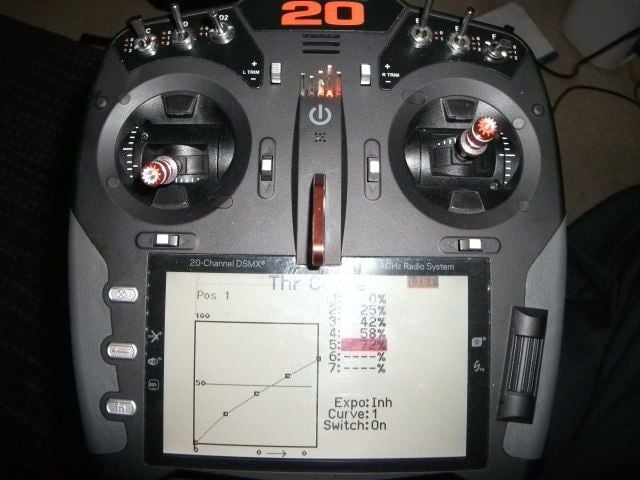

#17
Rates: Spektrum NX 20:
· Aileron – normal flight 59%, 24% expo; Snap 100%, 34% expo; Spin 80%, 29% expo
· Elevator- normal flight 92% up 97% down, 23% expo; Snap 90%, 23% expo; Spin 97%, 23% expo
· Rudder- normal flight 120%, 65% expo; Snap 65%, 50% expo; Spin 100%, 65% expo
Mixing Spektrum NX 20:
· Rudder to Aileron: -12%L and -19%R, no multi-point used.
· Rudder to Elevator: 1%L and -4%R, no multi-point used.
· Low Throttle to Elevator: 2% low elevator. Note- only activates to provide about 1/16 down elevator which comes into play two clicks above idle for straight (down line) trim.
Other Spektrum NX 20:
Aileron Spin (switch position) to rudder. This puts a very small amount (1/16 inch) of rudder in on spin rate switch position, as I had one wing drop early during spin entry. This keeps the nose pointed straight without an unexpected wing drop. I have done this on other models in the past to very good effect.
Aileron droop switch D2:
Provides about ¼ inch of down ailerons activated with switch D2. This slows the airplane down nicely for landing while keeping the tail up. I was finding that the tailwheel would hit when trying to flair on grass runways in particular. This is a trick I read from the K-Factor by Archie Stafford several years ago, who I believe got the tip from Dave Lockhart. Thanks Archie and Dave!!
· Aileron – normal flight 59%, 24% expo; Snap 100%, 34% expo; Spin 80%, 29% expo
· Elevator- normal flight 92% up 97% down, 23% expo; Snap 90%, 23% expo; Spin 97%, 23% expo
· Rudder- normal flight 120%, 65% expo; Snap 65%, 50% expo; Spin 100%, 65% expo
Mixing Spektrum NX 20:
· Rudder to Aileron: -12%L and -19%R, no multi-point used.
· Rudder to Elevator: 1%L and -4%R, no multi-point used.
· Low Throttle to Elevator: 2% low elevator. Note- only activates to provide about 1/16 down elevator which comes into play two clicks above idle for straight (down line) trim.
Other Spektrum NX 20:
Aileron Spin (switch position) to rudder. This puts a very small amount (1/16 inch) of rudder in on spin rate switch position, as I had one wing drop early during spin entry. This keeps the nose pointed straight without an unexpected wing drop. I have done this on other models in the past to very good effect.
Aileron droop switch D2:
Provides about ¼ inch of down ailerons activated with switch D2. This slows the airplane down nicely for landing while keeping the tail up. I was finding that the tailwheel would hit when trying to flair on grass runways in particular. This is a trick I read from the K-Factor by Archie Stafford several years ago, who I believe got the tip from Dave Lockhart. Thanks Archie and Dave!!





